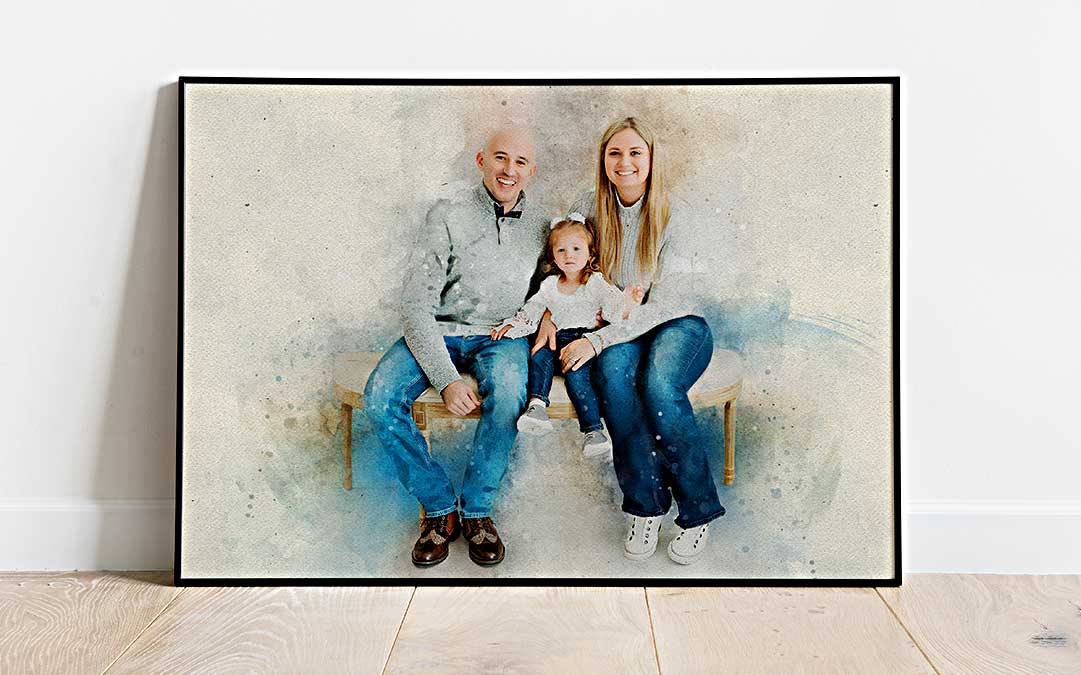Introduction
Art is not just decoration; it’s a transformation. In the realm of home and office decor, few mediums can match the delicacy and expressiveness of watercolor art. Known for its fluidity and ethereal quality, watercolor brings a touch of the sublime to mundane spaces, making it an ideal choice for those looking to refresh their surroundings.
What is Watercolor Art?
Watercolor, a painting method in which the paints are made of pigments suspended in a water-based solution, stands out for its ability to capture light and perform a range of tonal variations. This art form has a rich heritage, with famous artists like Albrecht Dürer and William Turner paving the way for modern practitioners.
Benefits of Decorating with Watercolor Art
Incorporating watercolor paintings into your decor can drastically enhance the aesthetic appeal of your home or office. The translucent layers and vibrant hues of watercolor can complement any interior design scheme, setting a mood and creating an atmosphere that can both soothe and invigorate the spirit.
How to Choose the Right Watercolor Art
Choosing the right piece involves more than just falling in love with a painting. Consider the color palette of your room, the light exposure, and the space available. A large, bright piece might work well in a spacious living room with plenty of natural light, while a smaller, subtler work could be perfect for a quiet corner in your bedroom.
Spotlight on Artists
The world of watercolor is rich with both emerging artists and established masters. Exploring artists such as Sargent, whose technique revolutionized the way watercolors are perceived, to contemporary artists who are pushing the boundaries with new techniques, offers a fascinating glimpse into the diversity of the medium.
Incorporating Watercolor Art in Different Rooms
Each room in your home can benefit from the addition of watercolor art. In the living room, large-scale watercolors can become a focal point, while in the bedroom, softer, more tranquil works can create a calming environment. In the office, vibrant watercolors can stimulate creativity and energy.
Maintenance and Care for Watercolor Art
To maintain the beauty of your watercolor artwork, protect it from direct sunlight and invest in quality framing. UV-protective glass can prevent fading, and proper matting can ensure that your artwork remains the centerpiece of your room for years to come.
DIY Watercolor Art Tips
For those interested in creating their own watercolor pieces, starting with basic supplies like artist-grade paper and watercolor tubes is key. Simple techniques such as wet-on-wet, dry brush, and layering can be explored through online tutorials or local workshops.
Buying Watercolor Art Online: A Guide
Purchasing original art online has never been easier. Websites like Etsy and Saatchi Art offer extensive collections of watercolor paintings from artists around the world. Ensuring authenticity usually involves checking the artist’s portfolio and reviews, and often a certificate of authenticity is provided.
Custom Watercolor Commissions
Commissioning a custom watercolor painting allows for a personal connection to the art. It’s a collaborative process where you can discuss your vision, preferences, and the details that you want to be highlighted, making the artwork uniquely yours.
Gallery and Exhibitions
For those who prefer to view artwork in person, visiting galleries that specialize in watercolor or attending exhibitions can be a rewarding experience. Many galleries also offer virtual tours, making it accessible to explore new artists and styles from home.
Framing and Presentation Ideas
The right frame can enhance a watercolor painting significantly. Options like wooden frames with a natural finish or minimalist metal frames can complement the artwork without overpowering it. Choosing the right mat and glass is also crucial for the preservation and presentation of the piece.
Watercolor Art as Gifts
Watercolor art makes for thoughtful and unique gifts, suitable for occasions such as weddings, anniversaries, and housewarmings. Selecting a piece that resonates with the recipient’s taste and interior decor can make it a cherished gift for years to come.
Impact of Watercolor Art in Interior Design
The impact of integrating watercolor art into interior design is profound. Case studies show that rooms with art tend to have enhanced ambiance and character. Testimonials from homeowners and designers alike underscore the transformative effect that art can have on a living space.
Conclusion
Watercolor art possesses an unparalleled charm and versatility, making it a wonderful addition to any space. As you consider transforming your own environment, remember that each piece carries a story and a touch of the artist’s soul. Explore, engage, and let your space be a reflection of your unique aesthetic and emotional landscape.
FAQs After The Conclusion
- What is the best way to determine the size of watercolor art for my space?
- Measure your wall space and consider the furniture and other decor elements. Typically, art should fill 60–75% of the available wall space.
- Can watercolor art be displayed in bathrooms or kitchens?
- Yes, but ensure it is properly framed with a protective glass to guard against moisture and heat.
- How often should watercolor art be cleaned or maintained?
- Dust the glass and frame regularly, and check for any signs of moisture or damage annually.
- Are there any specific lighting conditions best for displaying watercolor art?
- Indirect, natural light is best. Avoid direct sunlight and harsh artificial lights that can fade the colors.
- Can I mix watercolor art with other types of artwork in the same room?
- Absolutely. Watercolor art can complement a variety of other mediums, creating a dynamic and interesting art display.


